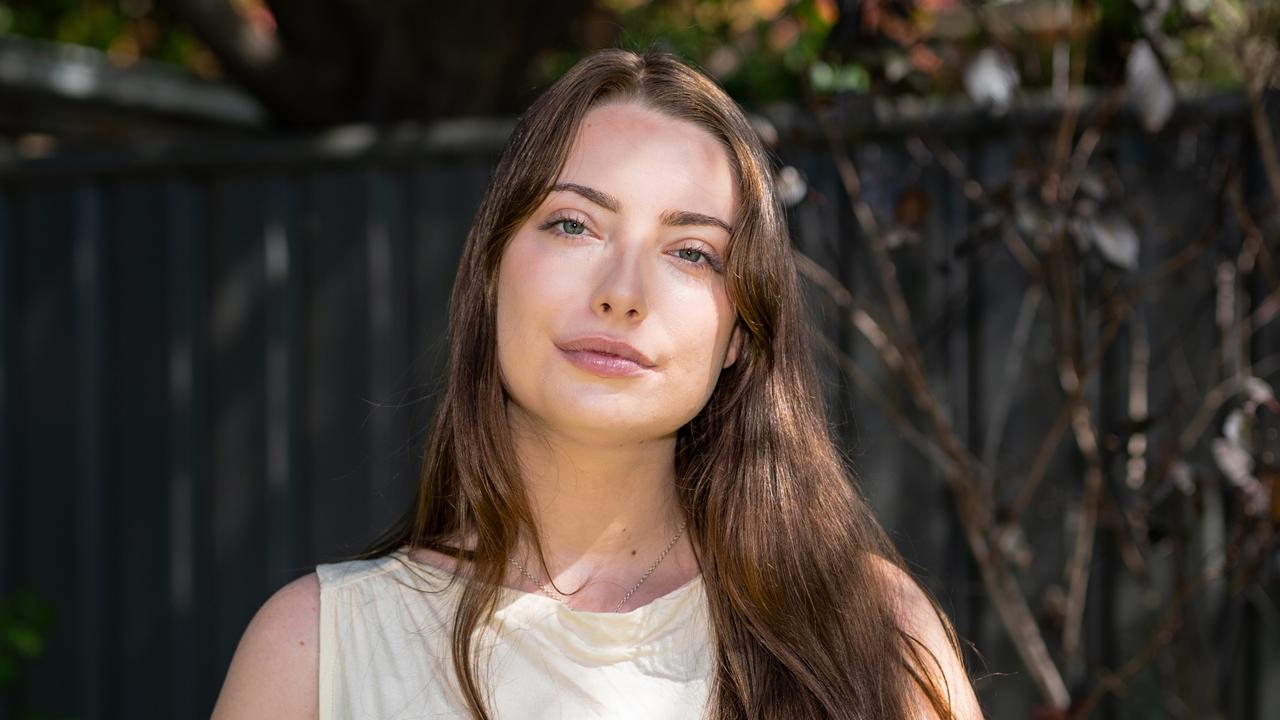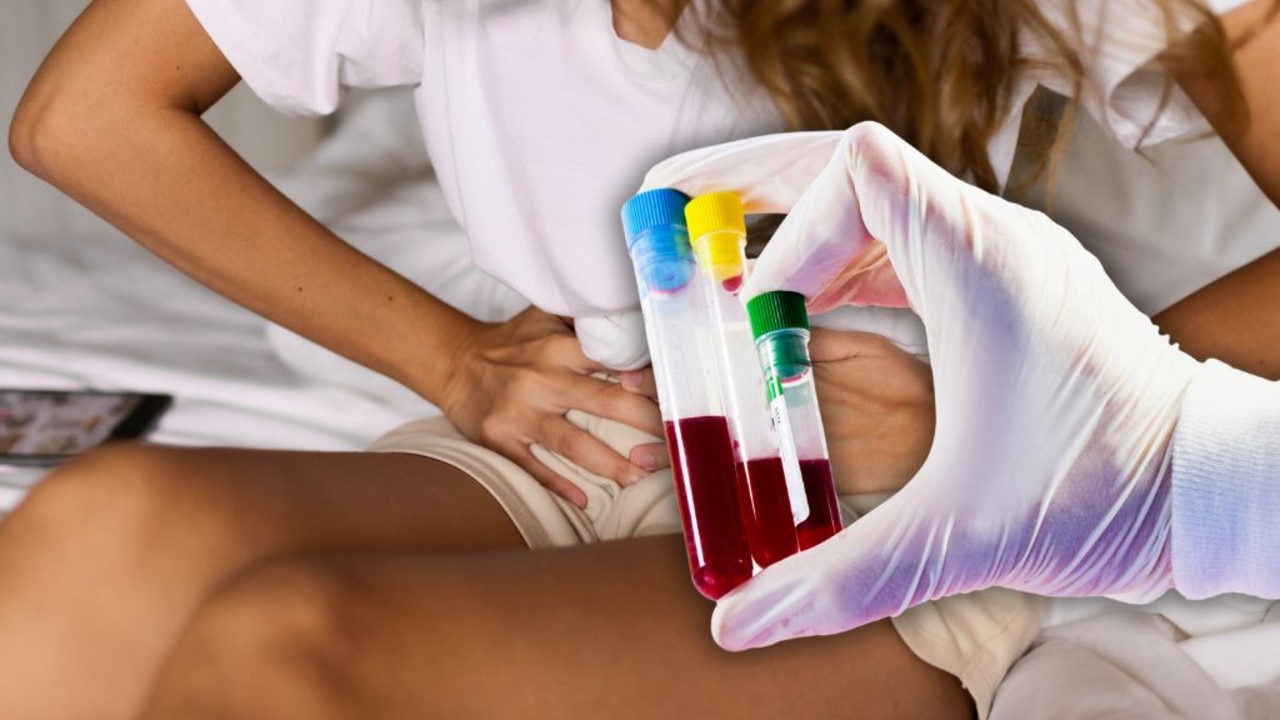‘I bled every day for a year’: Meet endometriosis’ painful little sister
Almost as unbearable as the pain is the lack of knowledge. Endometriosis is better known these days. Now, let’s talk adenomyosis. Jen Fleming knows it all too well. It forced her to have a hysterectomy at just 30.
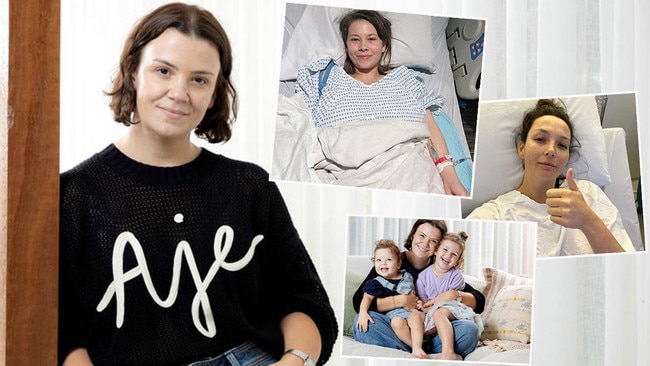
Endometriosis
Don't miss out on the headlines from Endometriosis. Followed categories will be added to My News.
You’ve heard of endometriosis – but do you know about the chronic condition’s barely known little sister, adenomyosis?
It’s just as painful, almost as common and, strangely, barely known but if you ask sufferers of both – like Jen Fleming – after decades of being dismissed, disregarded and doubled over in pain, it’s time that changed.
Fleming started having the severe symptoms of endometriosis as a 16-year-old, when she’d vomit and faint from the intensity of what she was feeling.
It took nine years to be formally diagnosed with endometriosis and polycystic ovary syndrome (PCOS), when she had a 6-centimetre cyst the size of a peach removed from her right ovary.
After the birth of her second daughter, the post-partum bleeding didn’t stop, so after three months she had an ablation which gave her just a few weeks reprieve until the bleeding started again.

That bleeding didn’t stop until she had a hysterectomy in August last year, aged 30.
She bled every day for a year —– yet she’s one of the lucky ones.
The two little girls who play at her feet are her miracles, and remain so after the joy of having more children was taken from her, as it is so many.
“I cried the whole time waiting in the bay for the surgery and into the room,” she says.
“It was a very emotional morning – I was very sad at the loss I was about to face, but also thankful for what my uterus gave me and relief to no longer bleed every day.
“I’m seven months post-op this last week gone and I have no regrets.
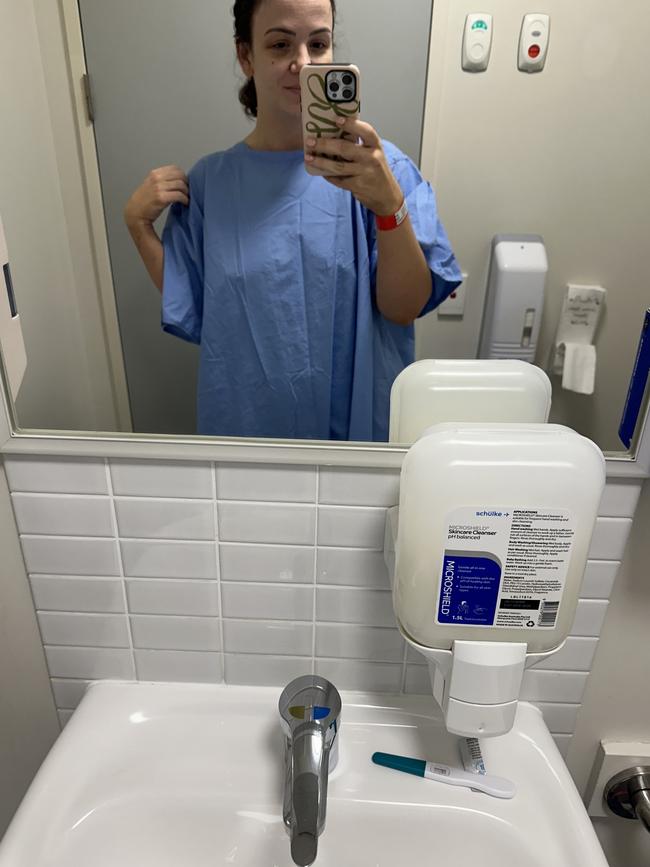
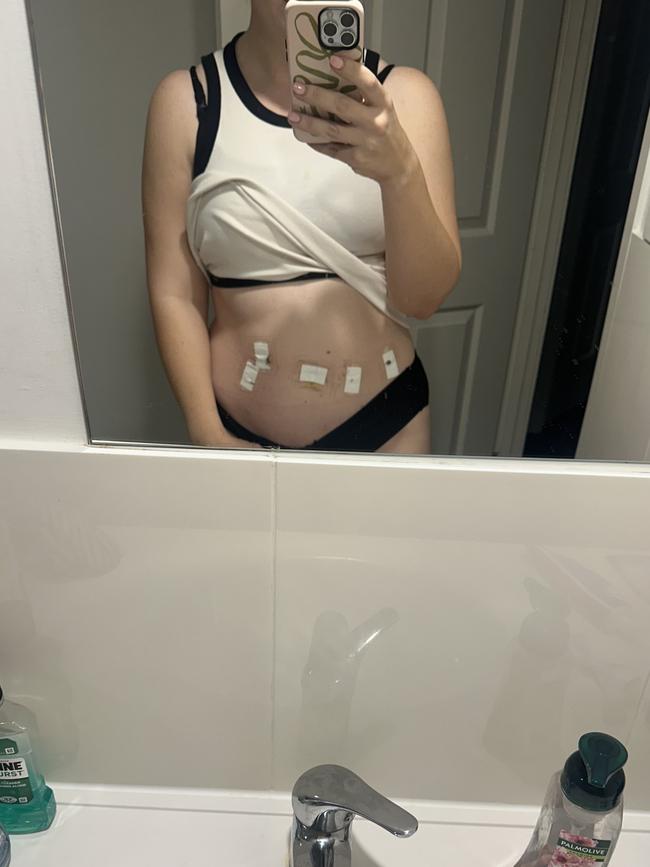
“I no longer bleed, I don’t have pain like I used to, I can run and play with my kids, my energy is so much better.
“I feel like a different person and it has been one of the best decisions I’ve made.”
Fleming’s hysterectomy, the year she turned 30, puts her with the 230,000 other Australian women who have one every year.
And while we have awareness months for the conditions which can often lead to a hysterectomy – she says we still don’t talk about them enough. And we should.
She is one of nearly a million Australian women who suffer with endometriosis — an ultimately debilitating disease where tissue similar to the lining of the womb grows outside it in other parts of the body.
Adenomyosis and endometriosis are closely-related conditions. Both can be responsible for pelvic pain that’s hard to distinguish.
Adenomyosis is estimated to be as common as endometriosis, however it is an area that is often ignored in research and so there is a high variance in literature regarding just how many people have it.
CRIPPLING TOLL
After last month’s Endometriosis Awareness month, April is Adenomyosis Awareness month – so it’s time to keep talking.
Common symptoms of both include pelvic pain that leaves you unable to get out of bed — like Ricki-Lee Coulter before her endo surgery last year.
Or struggling with infertility, like mother of one, Bindi Irwin, has been open about.
Former Wiggle Emma Watkins has long been a vocal advocate for endometriosis awareness, also suffering symptoms back in high school before being diagnosed with stage IV endo in 2017 and having urgent surgery a year later.
That was the same year Byron Bay-based entertainment reporter Renee Bargh also had surgery for endometriosis and ovarian cysts.
“I’ve struggled with the idea of sharing this journey publicly for many reasons over the years – mostly because I know many people deal with far worse things and I’m not looking for pity,” Bargh said at the time.
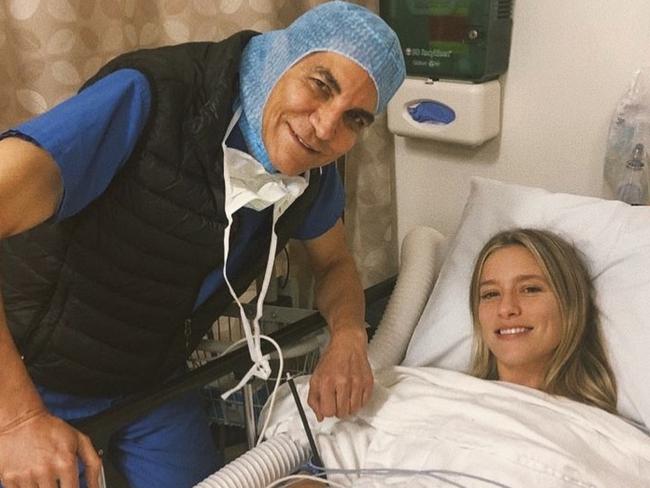
“But the fact is one in 10 women are affected by endo and not enough people talk about it.
“We need to teach young girls that periods are not supposed to be painful and to trust their intuition and seek a proper diagnosis.
“I hope by sharing my journey that it makes any other women struggling with endo feel less alone and empowers you to take control of your health.”
That was eight years ago, and while endo has become more a topic of conversation in recent years, adeno hasn’t.
It’s a cold comfort for someone like Fleming, who spent almost a decade not knowing what was wrong with her – and her frustration, and relief after treatment – is sadly not uncommon.
“My first endometriosis symptoms started when I was 16 — I got really painful periods and would often feel very sick at school,” Fleming says.
“This resulted in multiple emergency admissions, each time the finding was a ‘burst ovarian cyst’ but no investigation was ever done about why.
“I spoke to different doctors and each time was just recommended an alternate contraceptive treatment or told to get pregnant.”
MISDIAGNOSED, MISMANAGED
From the ages of 18 to 24, she tried three different contraceptive pills, an injection and implant to try and manage symptoms which only got worse.
By 2018 she would vomit and faint when she had her period – many times at work.
“In September 2018, I got married and when we returned from overseas I was very unwell – it took a few weeks but I was finally diagnosed with an inflamed appendix,” she says.
“I got told by the sonographer to drive to the hospital straight away.
“While in hospital, the surgeon asked if I had my period, and then suggested it was merely back pain and menstrual cramps causing my issues.
“The next day they removed my appendix and also noticed a large cyst on my ovary and signs of endometriosis.
“This was the first time I was referred to a gynaecologist.
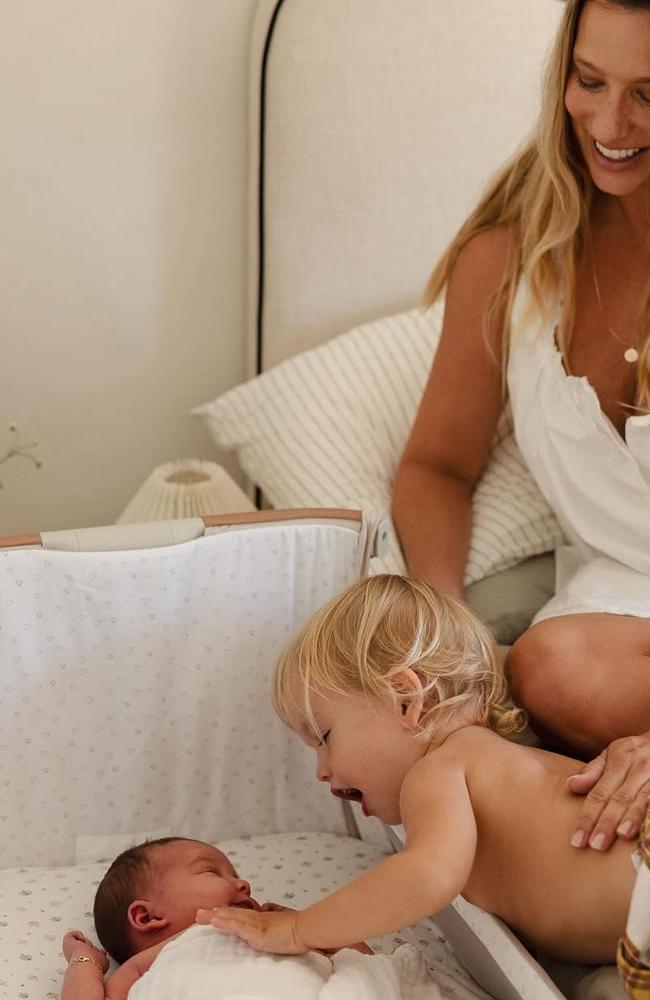
“I saw a gyno in late 2018, but was largely ignored and told to recover more from the appendectomy and come back.
“I had a Mirena (intra-uterine device) inserted during this time to see if it would help with the ongoing pain, heavy bleeding, fainting and vomiting I still had every month.”
In 2019 she saw a second gynaecologist, who wanted to operate immediately.
Four weeks later, a second laparoscopy removed a 6cm endometrioma, or cyst, from her right ovary.
In 2020, she fell pregnant with her first daughter, Elsie.
When Elsie was 10 weeks old, her obstetrician inserted another Mirena – and for the eight months she had it in, she bled.
“I removed it and the bleeding seemed to return to cyclical levels but still with ongoing endo flares and pain,” she says.
“When my second daughter Maeve was born in July 2023, I was still bleeding at my six-week check.
“At 12 weeks he offered me three options: a Mirena, the pill – but I couldn’t continue breastfeeding – or an endometrial ablation.”
UNBEARABLE PAIN
She had the ablation in October 2023 and at the six-week check, had stopped bleeding.
Less than three weeks after that appointment she started bleeding again – and didn’t stop.
From January to July, she bled every single day.
The pain was unbearable.
“I went back to my GP, who referred me for an ultrasound – it showed adenomyosis, over 30 cysts on each ovary, a bulky, poorly-defined uterus and very large ovaries,” Fleming says.
“I’d never had the word ‘adenomyosis’ said to me before – and after what I’ve known and lived through, I wish there was more awareness for it, like there is for endo.”
Her only real option for long-term outcomes was to have a hysterectomy.
A HYSTERECTOMY AT 30
A hysterectomy will not cure endometriosis because the lesions are outside the uterus – while adenomyosis is a uterine disease confined to the pelvis, with the lining of the uterus invading the muscle of the uterus.
As a result, a hysterectomy is a cure for adenomyosis – but if you have both endometriosis and adenomyosis, you may still experience endometriosis-related pelvic pain or symptoms post-hysterectomy.
On August 26, three years to the day after she left the same hospital with her first baby, Fleming had her hysterectomy.
“I was really sad and cried in my car after the appointment,” she says.
“I knew logically my body couldn’t take any more but, emotionally, I struggled to make the decision.
“I was so worried I’d be less of a mum. And losing that part of me where my daughters grew – their first home – was incredibly difficult.
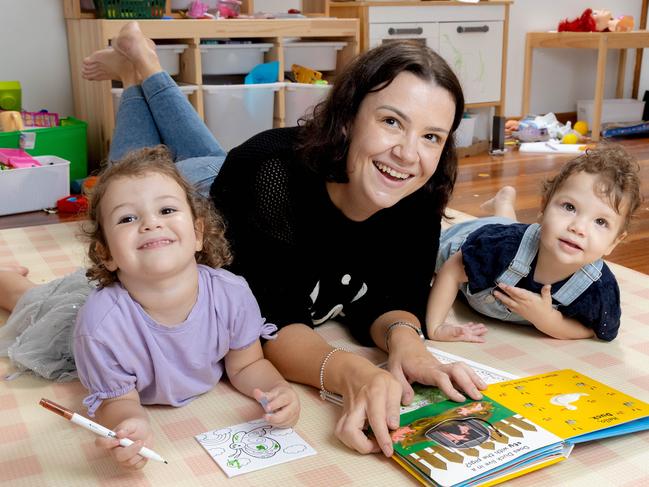
“It was an emotional loss, I had to let myself grieve. I know that sounds incredibly weird to say – it’s just an organ – but it represented a lot to me.
“With the hysterectomy, I was given multiple options about how I wanted to have it done, and what I wanted removed — I wanted to keep both ovaries to reduce the risk of going into menopause.
“I cried the whole time waiting in the bay for the surgery and into the room.
“It was a very emotional morning – I was very sad at the loss I was about to face, but also thankful for what my uterus gave me and relief to no longer bleed every day.
“Recovery-wise, I spent two nights in hospital and then was desperate to get home to my family.
“The fatigue during the recovery was one of the hardest parts to overcome, but within a few weeks I was back at three-year-olds’ birthday parties and playing on the floor – albeit not for long – with my daughters.”
Her decision – the hardest she’s ever made – is one she now celebrates.
‘DECADES OF FIGHTING’
“Sure, it feels strange to celebrate a decision to remove an organ; and it doesn’t lend itself to a billboard fundraising campaign – but for some people it is a celebration,” she says.
“Decades of fighting for treatments is exhausting for some; and being told no because of their age, or their fertility, or the doctor doesn’t understand is disheartening.
“For those people, having the surgery can be a huge relief.
“When I speak to other women who’ve walked this road, it’s a common theme. You can feel sad at what you’ve lost, and grateful to be without it at the same time.
“Why are we still sweeping women’s health issues under the carpet? We’re constantly hushed or ignored or expected to keep our problems with our reproductive systems to ourselves. If the issue was to do with another part of my body, people would want to talk about it; but because I’m talking about my uterus, my issue becomes invisible – not an acceptable morning tea conversation starter.
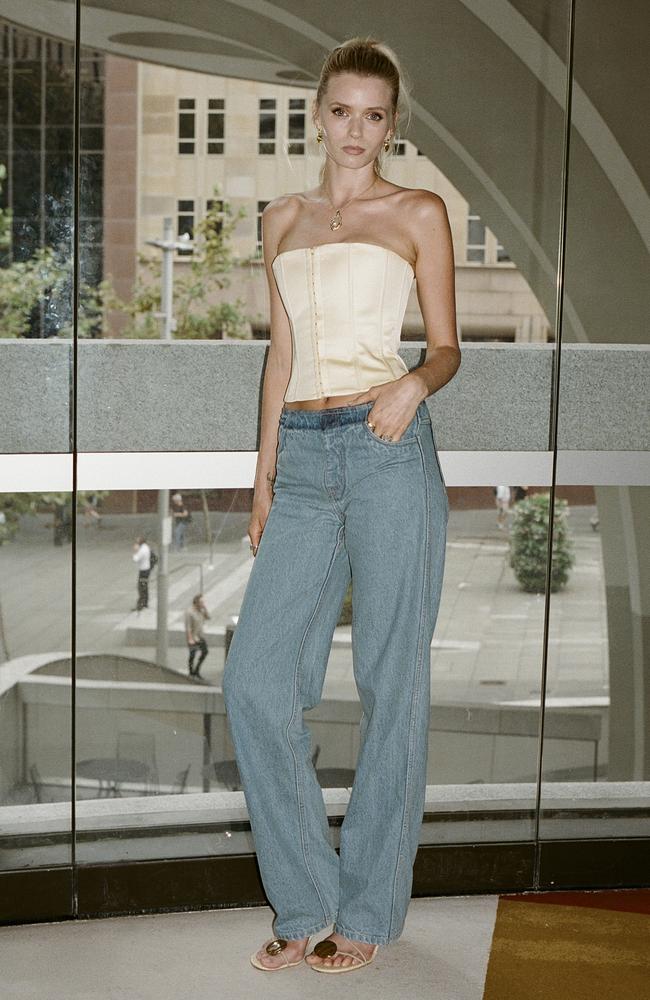
“If my hysterectomy, and the 15-year long battle with endometriosis, has taught me anything, it’s that women are powerhouses and we shouldn’t be afraid to talk about our bodies; to both other women and, even more so, to men.
“So, ladies, uterus to uterus (or sans uterus for me), it’s time to speak up.”
SHEARGOLD’S OWN GOAL
Top Australian model and actor Abbey Lee Kershaw did just that when she recently hosted a Men for Endo brunch at The International in Sydney’s CBD, inviting prominent men and media to be part of the conversation – particularly poignant after disgraced comedian Marty
Sheargold’s controversial comments about endo that saw him lose his job on Triple M radio.
On air, the star of ABC TV comedy Fisk said: “God, don’t ladies carry on. Jesus Christ, there is no end of it. Honestly, endometriosis, and this is controversial. No, I’m going to say it, it’s controversial. It’s made up.”
One in seven women, including Kershaw, suffer from endometriosis.
One in 10 suffer adenomyosis.
“Today I stand here with no anger towards him (Sheargold), I just hope that he can change his way of thinking,” Kershaw said at her event.
“We put that stigma on it – there is this ickiness about women’s issues that we need to change because it is not icky, it is just a body.
“I am incredibly passionate about it. I’ve been to so many events since my diagnosis and every time I go, everyone knows what endo is, has endo, it is always 80 per cent of women. I just feel like, if we really want to reach the people who don’t know about it and the people who are going to help support us, then we have to invite men and make them feel welcome, make them feel included.”
Likewise, there was a time when Ricki-Lee Coulter couldn’t get out of bed.
Couldn’t get to the shops or go for a run without being in such crippling pain she thought she’d have to call an ambulance.
RICKY-LEE’S LIFE CHANGER
This month it’s been one year since the Australian Idol host had surgery for her debilitating endometriosis – a diagnosis like Fleming she fought for years to get – and she is pain free.
“It is life changing,” Coulter told this magazinein February.
“Going for a run, I’d be sometimes laying on the ground thinking I’m gonna have to call an ambulance because something is going on that’s really crippling, and it’s terrifying.
“Or you’d be at the shops literally standing there against a shelf and not moving because you can’t, you’re in that much pain – it’s those kinds of things that you’re like, this isn’t normal.
“We shouldn’t just be made to feel like that’s a normal thing.

“It’s an interesting thing because I did toss up whether or not to talk about it because I just didn’t want to be like ‘oh poor me’ because there’s so many people that have it worse than me,” she continued.
“And then I thought … anyone that has endometriosis knows how long it takes sometimes to even just get a diagnosis or even for a doctor to actually even acknowledge what you’re saying and feeling.
“And to not feel like you’re being gaslit or made to feel like you’re crazy … and having all of the pain that you have and feel like you’re not being believed.
“It’s really sad and when I see people that struggle with it – and it can be debilitating – I think of all the stuff I’ve been up to over the last year or two, and I’m also dealing with this chronic unbearable pain and I’m having to slap on a smile and be like ‘everything is fine, guys’.
“I still have to go on stage and still have to do my job even when I can’t move because I’m in so much pain.
“But I’m so glad that I finally found the doctor that finally listened to me after 10 years and I finally got to have the surgery.”
Similarly, children’s entertainer Emma Watkins began experiencing symptoms back in high school and in July 2018 stopped touring with The Wiggles at the time to undergo urgent endo surgery. Bindi Irwin also suffered from her teenage years, and her diagnosis came after “a long eight years”. She had surgery in 2023.
The rate of endometriosis hospitalisations has doubled among females aged 20-24 in the past decade, from 330 hospitalisations per 100,000 females in 2011-12 to 660 per 100,000 in 2021-22, according to figures from the Australian Institute of Health and Welfare.
But help is out there.
Fleming says her decision was the best she’d made, despite her pain.
“I still get sad when I see a pregnant woman and I sometimes have to stop myself from the ‘why me’ sadness but I’m grateful for what my body gave me – two wonderful little ladies.” ■
Originally published as ‘I bled every day for a year’: Meet endometriosis’ painful little sister


